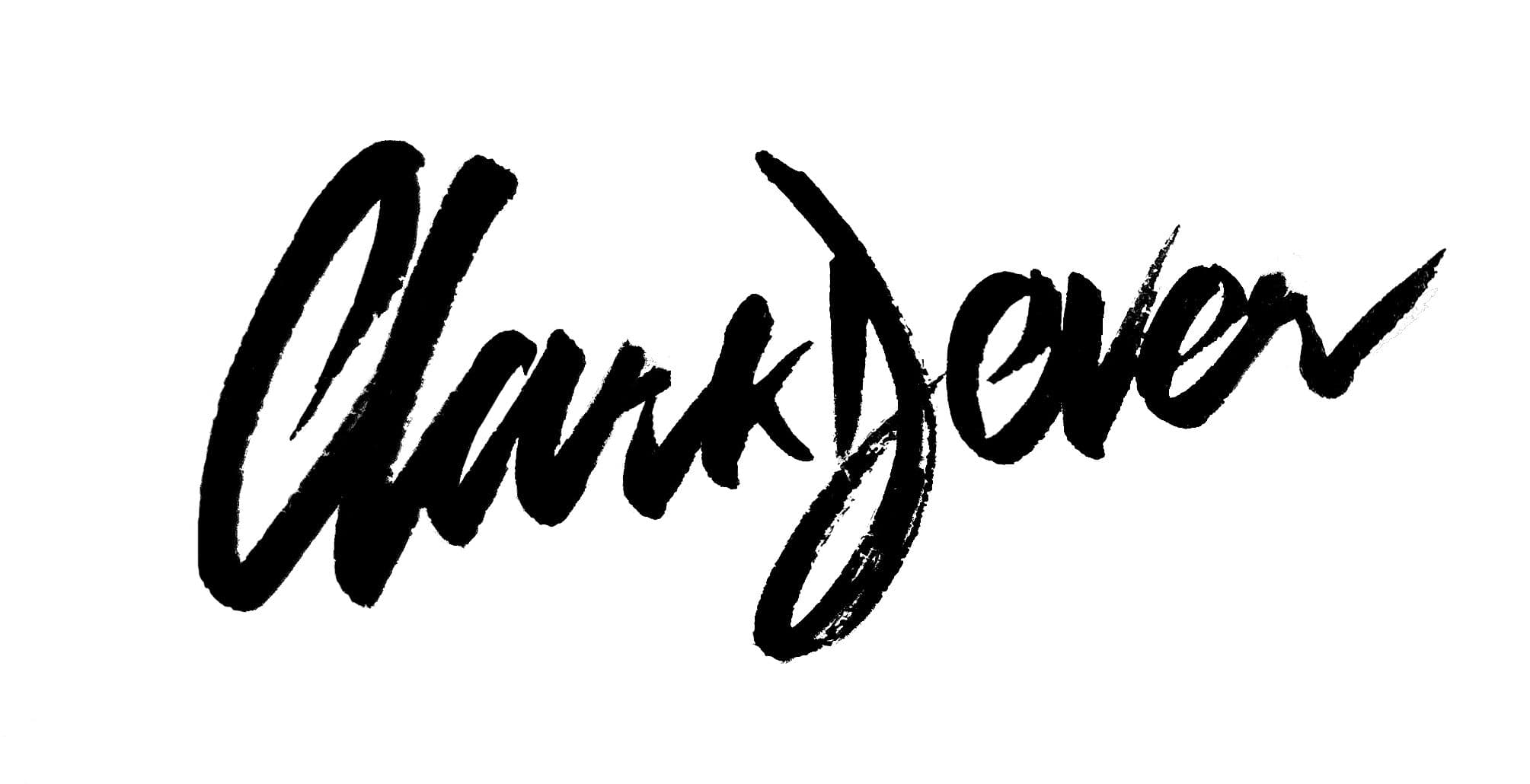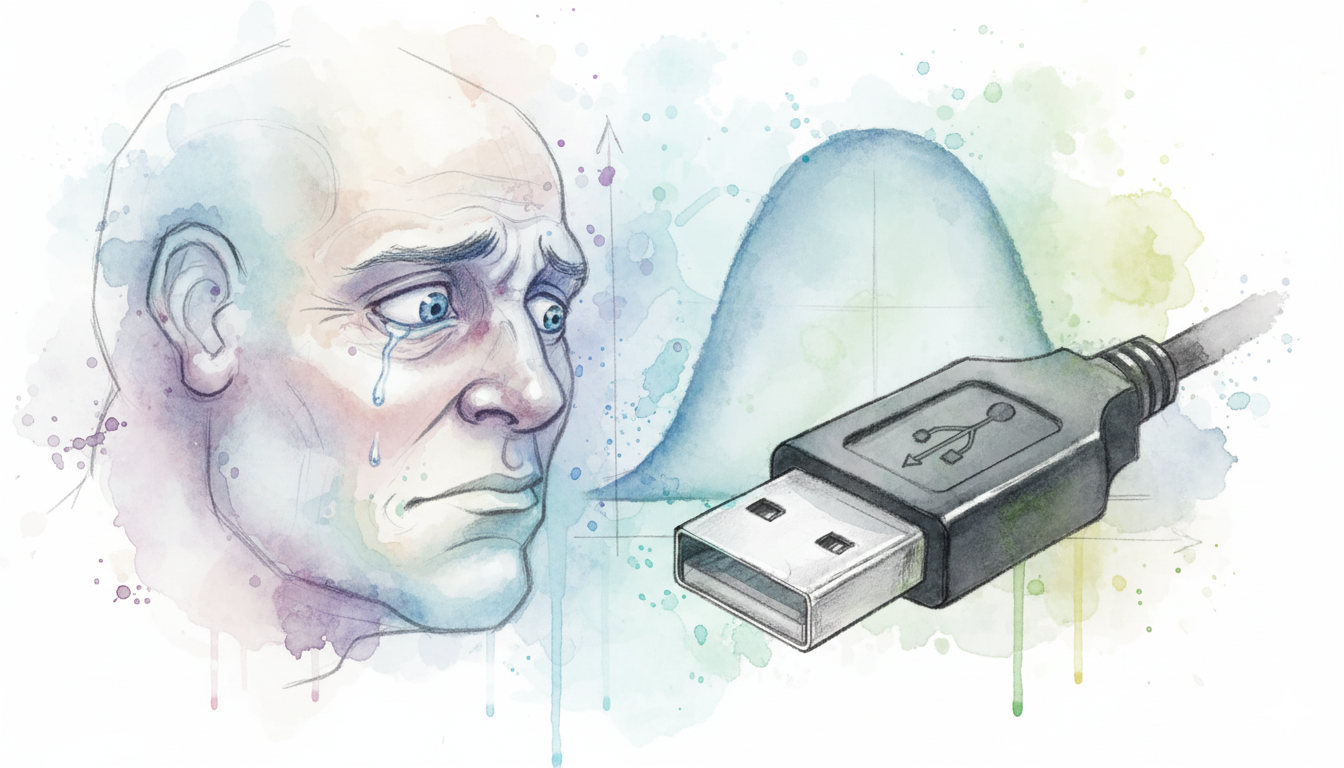TL;DR: The Billion-Dollar Cost of Bad Affordances
- Form that lies about function: USB-A looks reversible but isn't—misleading symmetry creates systematic user error
- 58,600 years of human time wasted: Fermi estimation across 1.89 trillion failed flip attempts since 1996
- The three-flip paradox: Why a 50/50 connector often takes three tries (misregistration + hesitation under blind conditions)
- Scale amplifies tiny friction: A one-second fumble multiplied by billions of users compounds into planetary waste
- USB-C fixed the affordance: True rotational symmetry eliminates the guessing game entirely
- Product lesson for builders: Audit the small paper cuts in your UX—at scale, they become catastrophic
When your interface lies to users about how it works, you're not building convenience. You're building a global time tax.
I'm on the floor behind my TV trying to plug in a Chromecast. I can't see the port, so I jab the USB-A connector, hesitate, feel resistance, flip it over, jab again, curse under my breath, flip it back, and finally it seats.
I've done this thousands of times. PCs, phone chargers, car dashboards, TVs and game consoles. Every. Single. Time. The same frustrating dance with a connector that looks like it should work either way but never does on the first try.
That routine annoyance made me wonder: how much total human time has this single design decision wasted?
So I built a model to find out.
The Answer: 58,600 Years of Collective Fumbling
Since USB Type-A launched in 1996, humanity has wasted approximately 58,600 years of cumulative time flipping these connectors back and forth.
For a relative time comparison, it's estimated the English version of Wikipedia represents about 34,000 years of human labor. So this one design decision erased almost two wikipedias in value from humanity.
That's the median estimate from a Monte Carlo simulation across four major use segments: PCs and laptops, chargers and power bricks, automotive and transport, and TVs and consoles. The 90% confidence interval ranges from 26,700 to 107,800 years, depending on your assumptions about adoption curves and user behavior.
Behind that number sit roughly 1.89 trillion failed flip attempts. Each one cost about one second of human attention—the time it takes to push, detect resistance, hesitate, flip, and try again.
Those seconds add up.
Why USB-A Fails: When Form Lies About Function
USB Type-A exhibits a textbook affordance failure. The connector shell is rectangular and visually symmetric. Your brain sees that symmetry and assumes reversibility. Either orientation should work, right?
Wrong.
The keyed interior design means only one orientation seats correctly. But the external form doesn't communicate that constraint. Form and function are misaligned. The interface lies to you about how it behaves.
Under good lighting and direct line of sight, you can spot the USB trident logo or the seam orientation and succeed on the first try. But in blind or low-light conditions—behind a TV, under a desk, in a dark car, reaching behind a PC tower—you're guessing. And a misleading 50/50 guess often becomes three attempts because of the "misregistration paradox."
You try orientation A. It feels wrong (or you fumble the angle). You flip to B. That also feels wrong. You flip back to A, apply more force, and it finally seats. The connector was probably correct on the first try, but hesitation and poor tactile feedback made you doubt yourself.
USB-C solved this completely. True rotational symmetry. No guessing. The affordance matches the behavior. Plug it in, it works.
That's the design USB-A should have shipped. But in 1996, the cost and electrical constraints likely made a reversible design impractical. The decision was rational at the time. The problem is that infrastructure decisions lock in for decades. Type-A became the standard, and billions of devices shipped before USB-C arrived to fix it. Path dependency means we're still paying the flip tax today; even as USB-C slowly displaces these legacy ports.
How I Estimated the Global Time Wasted
I used a Fermi-style model to estimate cumulative wasted time across nearly three decades of USB-A usage. Here's the structure:
Variables That Drive the Model
- Installed base over time: How many devices with USB-A ports existed each year, segmented by category
- Ports per device: Average usable USB-A ports on PCs, chargers, cars, and TVs
- Plug sessions per port per year: How often users actually insert a cable
- Blind share: Fraction of insertions done without direct visibility
- Type-A share: Proportion of sessions using Type-A vs. newer standards (declines post-2016 as USB-C adoption accelerates)
- Attempt distribution: Probability of success on attempt 1, 2, 3, or more tries
- Time per failed attempt: ~1 second of fumbling per flip
The Core Formula
Total Time = ∫ Σ [Devices × Ports × Sessions × Blind_Share × TypeA_Share]
× Expected_Failed_Flips × Time_Per_FlipIntegrate over 1996 to present. Sum across all segments. Multiply blind plug-in events by expected failures per session, then by time wasted per failure.
Key Assumptions
- Four global segments capture most blind insertions: PCs/laptops (highest volume), chargers/bricks (proliferation of phone/tablet charging), cars/transport (awkward angles, high blind share), and TVs/consoles (lower frequency but very high blind usage)
- Adoption curve: Logistic rise through the 2000s as USB became ubiquitous, then exponential decline in Type-A share starting around 2016 when USB-C began displacing legacy ports
- First-try success under blind conditions: ~35% based on the inherent 50/50 odds adjusted for misregistration and user hesitation
- The three-flip phenomenon: Probability mass on attempts 2–3 reflects the "right, flip wrong, flip right again" experience most of us know intimately
- One second per failed flip: Conservative estimate for the push-detect-hesitate-flip cycle
The full methodology, code, and parameters live in the GitHub repository so you can rerun the model with your own assumptions.
Segment Breakdown: Where the Time Went
Here's how the waste distributed across categories in the deterministic run:
- PCs and Laptops: ~37,900 years (largest installed base, frequent blind insertions behind desks and towers)
- Chargers and Power Bricks: ~17,300 years (explosive proliferation with smartphones, often plugged in awkward positions)
- Cars and Transport: ~3,260 years (lower volume but very high blind share—dashboard ports are almost never visible during insertion)
- TVs and Consoles: ~2,822 years (lower session frequency offset by nearly 100% blind usage—who looks behind their TV?)
The Monte Carlo runs show medians consistent with these figures, with the 90% confidence interval spanning roughly half to double the median depending on uncertainty in installed base peaks and user behavior distributions.
The Product Design Lesson Every Builder Needs
USB-A's design flaw isn't a quirky historical footnote. It's a case study in how spec-level affordance mismatches scale into planetary waste.
Small Friction Compounds at Scale
A one-second fumble feels trivial in isolation. Multiply it by billions of users over three decades and you get civilizations worth of wasted human attention. Every tiny paper cut in your product experience gets amplified by your user base size and usage frequency.
If you're building at scale, audit your interface for micro-frictions that don't seem worth fixing. They might be costing your users years of collective time.
Backwards Compatibility Has Hidden Costs
The USB Implementers Forum chose a non-reversible design in 1996 likely due to cost, manufacturability, and electrical constraints of the era. Those were rational tradeoffs at the time. But the ecosystem became locked in. Billions of devices shipped with Type-A ports. Cables, peripherals, and user expectations all standardized around the flawed design.
Backwards compatibility kept the ecosystem humming, but the world paid a flip tax for two decades until USB-C arrived.
When you're designing infrastructure that will scale and persist, remember that today's expedient choice might become tomorrow's permanent friction.
Affordances Are Not Optional
Your interface should communicate how it behaves. If form suggests reversibility, make it reversible. If it's keyed, make the key visually and tactilely obvious. Don't force users to guess, especially under conditions where they can't see what they're doing.
USB-C got this right. The connector is truly reversible because the internal design supports it and the external form promises it. Affordance and behavior are aligned. Users never have to think about orientation.
That's the standard your product should meet.
What Micro-Friction Is Hiding in Your Product?
I built this model because I was annoyed enough to care. A few seconds of fumbling behind my TV shouldn't matter. But repeated billions of times, it does.
Your product has friction points like this. Little hesitations. Awkward workflows. Interfaces that mislead users about what's possible. Each one feels minor in isolation, but scale makes them count.
The code and full methodology are available at github.com/clarkdever/usb-a-time-wasted. Run it yourself. Adjust the priors. See what happens when you change assumptions about blind share or flip time.
More importantly, ask yourself: Which affordance in your product is a small paper cut now but catastrophic at scale?
Find it. Fix it. Before your users waste 58,000 years figuring it out.

